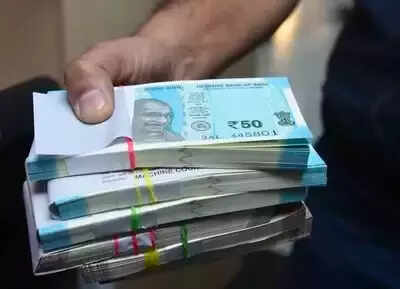The inclusion of India in a major global bond index is expected to strengthen the rupee against its peers, despite the possibility of higher US interest rates affecting the appeal of emerging market assets, according to an ET report. The Reserve Bank of India is likely to absorb some of the incoming dollar inflows to support export competitiveness. The stable flow of overseas funds is seen as a cushion against multi-year rise in US bond yields and increasing crude oil prices.
While significant dollar inflows from index inclusion are not expected for around six months, the rupee’s outlook remains constructive, especially in contrast to the depreciating Chinese yuan and Malaysian ringgit against the US dollar.
JP Morgan recently announced that India would be added to its Government Bond Index Emerging Markets global index suite in June 2024, potentially bringing in over $20 billion of stable flows to India’s sovereign bond market over two years. Traders are hopeful that the Bloomberg Global Aggregate Index will follow suit with a similar announcement in the coming months.
According to Anubhuti Sahay, Standard Chartered Bank’s Head of South Asia Economic Research, India’s inclusion in major global indices is a medium-term positive, both in terms of flows and potential additional inflows if other index providers also include India.
The rupee has seen a 0.5% depreciation in 2023 against the US dollar. Dilip Parmar, research analyst at HDFC Securities sees rupee in the range of 81.50-84/$1 for the next few quarters, leaving room for appreciation despite global challenges. However, analysts also recognize that the Reserve Bank of India is likely to accumulate USD reserves in an uncertain global environment.
“We expect the RBI to accumulate USD, should spot USD/INR fall further on expectations of bond inflows. After selling $ 84.4 billion (spot and forwards) in 2022 to defend rupee, we estimate that India has brought $35.4 billion from January-July 2023 (spot and forward),” Nomura said in a report. “However, we estimate that it sold $6.2 billion in spot since August to lean against INR depreciation pressures and amid a pickup in foreign equity outflows.”
Despite Brent crude futures exceeding $90 per barrel and the 10-year US bond yield reaching a 16-year high, the rupee has outperformed nine Asian currencies in 2023, according to Bloomberg data.
From a fundamental perspective, analysts anticipate a protective buffer for India in the next year. HSBC economists Pranjul Bhandari and Aayushi Chaudhary say that FY25 will likely experience the main Balance of Payments bounty with US20-22 of inflows staggered between June 2024 and March 2025.
While significant dollar inflows from index inclusion are not expected for around six months, the rupee’s outlook remains constructive, especially in contrast to the depreciating Chinese yuan and Malaysian ringgit against the US dollar.
JP Morgan recently announced that India would be added to its Government Bond Index Emerging Markets global index suite in June 2024, potentially bringing in over $20 billion of stable flows to India’s sovereign bond market over two years. Traders are hopeful that the Bloomberg Global Aggregate Index will follow suit with a similar announcement in the coming months.
According to Anubhuti Sahay, Standard Chartered Bank’s Head of South Asia Economic Research, India’s inclusion in major global indices is a medium-term positive, both in terms of flows and potential additional inflows if other index providers also include India.
The rupee has seen a 0.5% depreciation in 2023 against the US dollar. Dilip Parmar, research analyst at HDFC Securities sees rupee in the range of 81.50-84/$1 for the next few quarters, leaving room for appreciation despite global challenges. However, analysts also recognize that the Reserve Bank of India is likely to accumulate USD reserves in an uncertain global environment.
“We expect the RBI to accumulate USD, should spot USD/INR fall further on expectations of bond inflows. After selling $ 84.4 billion (spot and forwards) in 2022 to defend rupee, we estimate that India has brought $35.4 billion from January-July 2023 (spot and forward),” Nomura said in a report. “However, we estimate that it sold $6.2 billion in spot since August to lean against INR depreciation pressures and amid a pickup in foreign equity outflows.”
Despite Brent crude futures exceeding $90 per barrel and the 10-year US bond yield reaching a 16-year high, the rupee has outperformed nine Asian currencies in 2023, according to Bloomberg data.
From a fundamental perspective, analysts anticipate a protective buffer for India in the next year. HSBC economists Pranjul Bhandari and Aayushi Chaudhary say that FY25 will likely experience the main Balance of Payments bounty with US20-22 of inflows staggered between June 2024 and March 2025.
Denial of responsibility! YoursTelecast is an automatic aggregator of the all world’s media. In each content, the hyperlink to the primary source is specified. All trademarks belong to their rightful owners, all materials to their authors. If you are the owner of the content and do not want us to publish your materials, please contact us by email – admin@yourstelecast.com. The content will be deleted within 24 hours.


